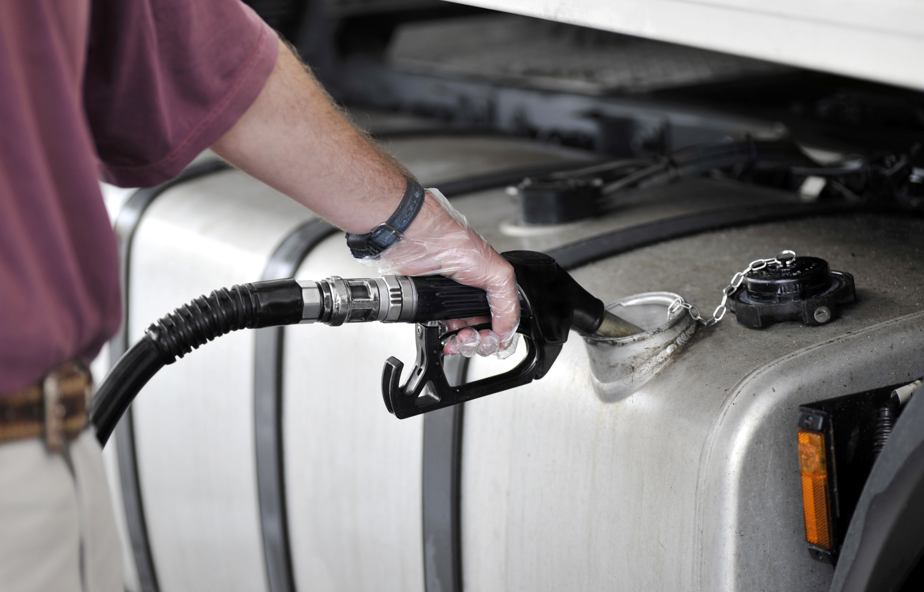Fuel is second only to wages as the biggest cost for most transport businesses. And with most operations using tens of thousands of litres a year, even the smallest differences in price, consumption and management can add up to significant savings.
That’s why the first step in managing fuel is knowing exactly how much you’re using. The more information you have, the better; monthly figures are fine, but weekly numbers are even better, as they’ll help you understand better where the fuel is going (such as a particular site or run that pushes consumption up).
You should already be tracking usage for the fuel tax credit but take a moment to ensure you’re getting accurate information (for example, doing random checks against receipts or fuel card data).
Cost is king
The next step is to get on top of your costs. Do you have fuel cards that give drivers discounts off the board price? A fixed weekly price?
“If you can get a deal where you have some control over the purchase – when and where you buy, for how much – that’s where you can get some savings,” says Marty Corry, NTI’s Transport Risk Engineer.
“Now’s the perfect time to review how you’re purchasing your fuel. You want to know how much you’re paying, what’s the discount structure, how’s it set up … you need all the information.”
Of course, the price per litre isn’t the only cost component. You also need to understand how your fuel account works. What are your credit terms, your billing period, your card or other administration costs?
There can be significant differences in fees between suppliers, Marty says. “You want to minimise all the costs not associated with the commodity. You can’t change the commodity too much beyond negotiating yourself a rate.”
But you may be able to find savings elsewhere: “You need to look around,” Marty says. “Compare suppliers and their account fees and card fees, locations, discount structures, the lot.”
Time is money
One area where a good supplier can save you time and money is with a good customer portal. Having all your information up-to-date and available in one place online can save your business a lot of time and money.
“A customer portal can reduce your back-office costs,” Marty says. “It can manage your fuel tax credits, filter your transactions from light vehicles and heavy vehicles.”
“Check them out because different suppliers offer portals, and you want to make sure the one you go with is going to give you the information you want.”
The savings at the back end can be significant; Marty knows larger businesses that have saved the cost of a full-time employee thanks to their fuel supplier’s portal (“guys that have 300 or 400 bits of gear on the road … it’s a massive saving for them because the system can do all that [information-gathering]”).
Another area for time-saving is filling up from a tank in your yard, rather than relying on service stations. If you have a dozen trucks and they all take 10 minutes to fill up at a servo, that’s two hours of lost time.
“We’ve seen transport operators put back-to-base tanks in their yards for trucks that will come back to the depot every night and they’re filled up at the start or finish of each shift,” Marty says.
“Operators can halve their refueling time with this method, which is a reduction in time off the road as well as a reduction in cost to the business.”
If a tank isn’t practical for your yard, and your trucks need to fill up on the road, you can still find time savings. Find a fuel supplier that provides a ‘one-stop-shop’ with suitable amenities like toilets, showers, food and drivers’ rooms. They’ll help your drivers eliminate extra stops and provide better, more restful environments for their breaks.
Cashflow
Another area where you might be able to make some gains, if you haven’t already, is with your payment terms. Talk to your supplier if the current terms aren’t serving your business as well as theirs.
“If you’re paying 30 days end-of-month,” Marty says, “you’re paying for that. Every week is point one of a cent per litre. So, if you’re paying cash, and you’re paying 30 days end-of-month, you’re paying nearly the best part of half a cent dearer than someone else. Which can add up.”
The key is to understand whether that extra cost is worth it because it benefits your cashflow. If you can do without it, you may be able to generate some operational savings.
Liquid gold?
Another key concern besides cost is security. Especially with fuel prices looking set to rise, businesses need to protect themselves against unscrupulous – and downright criminal – individuals and operators.
You need to control how fuel tanks and cards are accessed, and make sure your yard is secure. This becomes especially important if you have a fuel tank on-site, as Marty notes:
“If you’re going to put a tank in the yard, how is it accessed? Is it a double-bunded tank that can only be accessed with a card and a PIN?
“We’ve even seen trucks get their tanks drained, so you’ve got to make sure your yard is secure.”
Any time is a good time to check your business for potential savings. And where fuel is concerned, you might be surprised at how much difference even the smallest efficiencies and adjustments can make.
